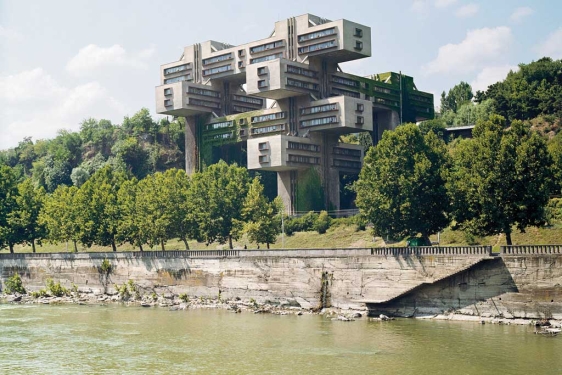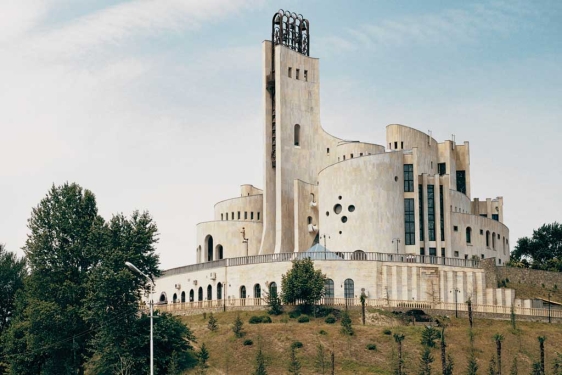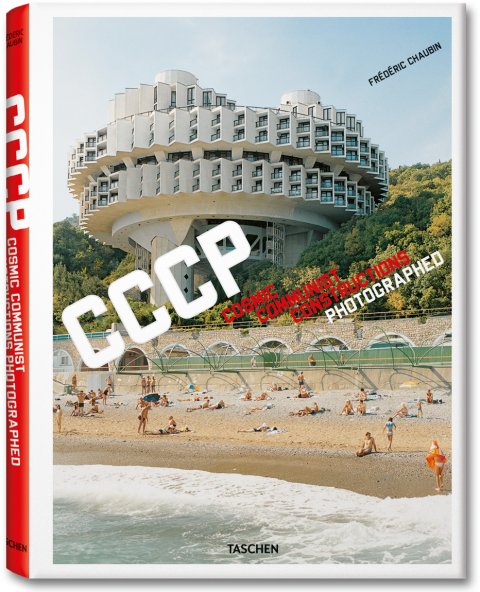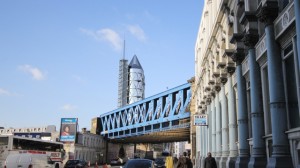French photographer Frédéric Chaubin has been involved in a fascinating & cosmic task… rescuing the essence of those built dreams from the last period of the U.R.S.S… 90 buildings sited in 14 former Soviet Republics which express what he considers to be the fourth age of Soviet architecture….
His poetic pictures reveal an unexpected rebirth of imagination, an unknown burgeoning that took place from 1970 until 1990. Contrary to the 1920s and 1950s, no “school” or main trend emerges here. These buildings represent a chaotic impulse brought about by a decaying system. Their diversity announced the end of the Soviet Union.

This rebirth of crazy creativity had to do more with the decadency of a system and the obsession of the cosmos and the individual identity than with any ideology or trend rebirth.

Taking advantage of the collapsing monolithic structure, the holes in the widening net, architects went far beyond modernism, going back to the roots or freely innovating. Some of the daring ones completed projects that the Constructivists would have dreamt of (Druzhba Sanatorium, Yalta), others expressed their imagination in an expressionist way (Palace of Weddings, Tbilisi). A summer camp, inspired by sketches of a prototype lunar base, lays claim to Suprematist influence (Prometheus youth camp, Bogatyr).
Then comes the “speaking architecture” widespread in the last years of the USSR: a crematorium adorned with concrete flames (Crematorium, Kiev), a technological institute with a flying saucer crashed on the roof (Institute of Scientific Research, Kiev… top photograph here), a political center watching you like Big Brother (House of Soviets, Kaliningrad).

This mess outlines the geography of the USSR, showing how local influences made their exotic twists before the country was brought to its end.
And who’s piled up all this cosmic images? Taschen of course…. in their upcoming book released next March for 35$ or 35€ (they don’t know what exchange rate means ok?).
But if you can’t wait there’s an exhibition at the ZKM | Museum of Contemporary Art in Karlsruhe (Germany) starting the 29th of this month and running until 27th of March. Many more photos this way!






















